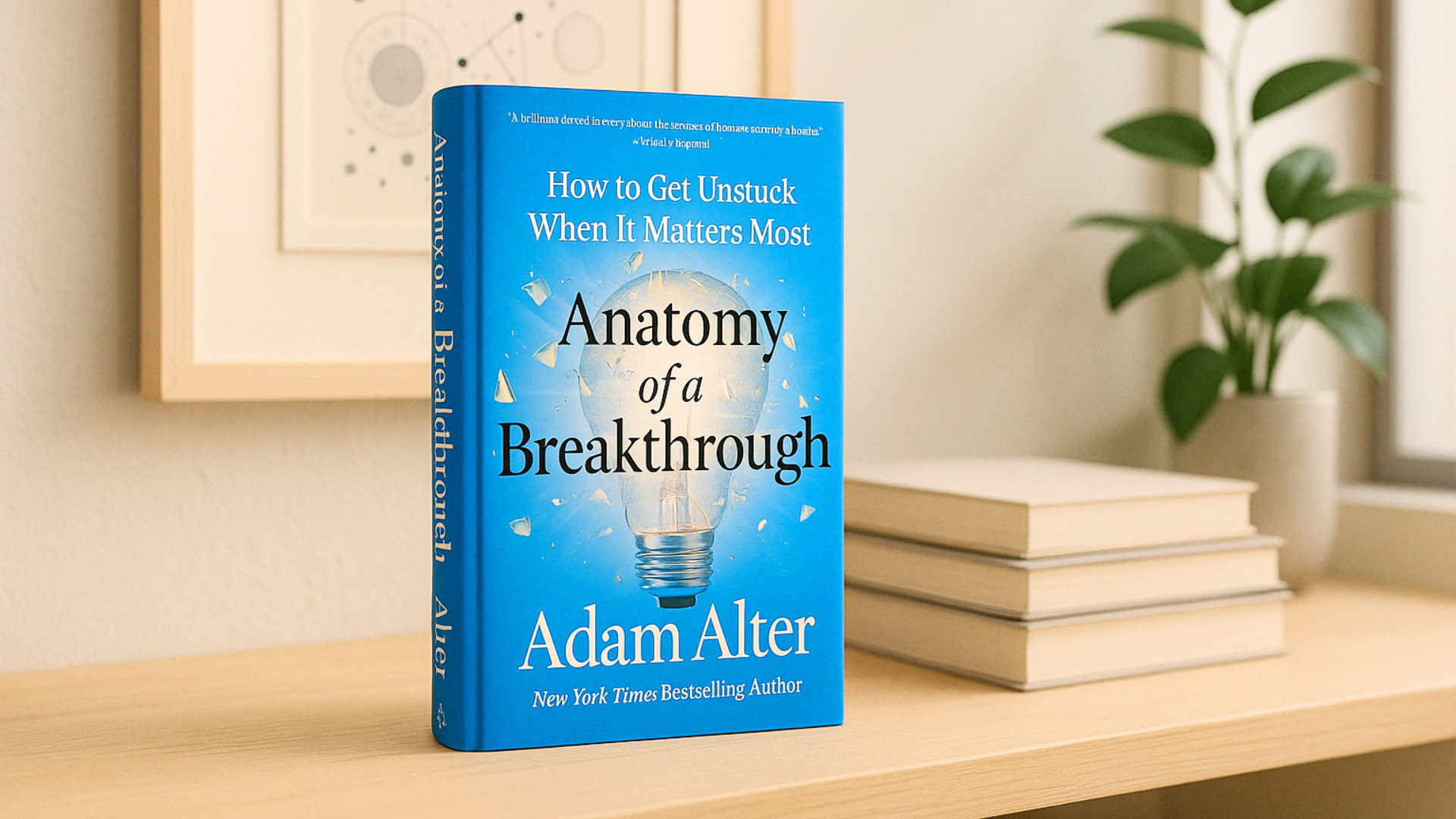Gentle Strategies for Moving Through Burnout and Inertia

Book Review: Anatomy of a Breakthrough by Adam Alter
A thoughtful and research-informed guide to navigating stuckness with clarity and compassion
In Anatomy of a Breakthrough, Adam Alter addresses a universal yet often misunderstood part of the creative and professional journey: the experience of being stuck. Whether you are facing a creative block, struggling with burnout, or trying to regain momentum in a long-term project, this book provides a grounded, psychological approach to understanding and working through those moments.
Rather than offering oversimplified advice, Alter approaches stuckness as a natural, even necessary part of doing meaningful work. His approach is both evidence-based and deeply human. He does not rush the reader toward a fix but instead guides them through a process of recognition, reframing, and gentle reengagement with forward motion.
What the book promises
Alter promises to help readers identify the root causes of stuckness and learn how to move through it. He reframes stuckness not as failure or weakness but as a predictable part of growth and change. The book introduces a four-part framework to support this process: Help, Heart, Head, and Habit. Each pillar represents a different lens through which to understand and address inertia.
The book also promises to be both intellectually grounded and emotionally validating. Alter draws from research in psychology and neuroscience while keeping the tone accessible and reflective. His goal is not only to help readers move again, but to help them move with greater self-awareness.
What the book delivers
Alter delivers a clear, engaging, and practical guide. The book is divided into four main parts. The first, Help, explores the experience of stuckness and introduces the idea that support and self-awareness are key to progress. The second, Heart, focuses on the emotional weight that often accompanies stuckness, such as shame, fear, or regret. The third, Head, offers cognitive strategies for shifting perspective and opening up new possibilities. Finally, Habit provides actionable suggestions for building routines that foster motion.
Throughout, Alter shares stories from a wide range of contexts, including the arts, business, athletics, and personal growth. These examples illustrate how people move through creative stalls, decision paralysis, or professional ruts. Each story feels relatable and is paired with insights that feel both realistic and encouraging.
The research is presented with clarity. Alter explains complex ideas in a way that feels conversational rather than clinical. He also challenges common assumptions about productivity and success, encouraging readers to take a more process-oriented view of progress.
Style and structure
Alter writes with clarity, warmth, and purpose. His voice feels steady and intelligent without being detached. He treats the reader as capable and curious, which supports engagement with material that can sometimes feel vulnerable or frustrating.
The structure is intuitive and easy to follow. Each of the four main sections includes short chapters that blend narrative, theory, and application. Headings and subheadings break up the content in ways that make it easy to revisit specific ideas later. There are summaries and reflections throughout, which help the reader stay oriented and make meaning of what they are reading.
The format supports flexible reading. Whether a person is dipping in to address a specific situation or reading from cover to cover, the book adapts to a variety of needs and attention spans.
Where the book shines
One of Alter’s strengths is his ability to make the emotional experience of stuckness feel normal. He does not minimize how difficult or painful it can be to feel unable to move forward. Instead, he invites the reader to see this space as fertile ground for reflection and redirection.
The book also shines in its integration of research and real-life examples. Alter does not just tell the reader what to do. He shows them how others have done it, what worked, and why. These stories are not framed as miracles or massive breakthroughs. They are quiet, often subtle moments of change that feel achievable.
His psychological framing offers language that helps readers understand their own experience more clearly. By naming different types of inertia and identifying common thought patterns that keep us stuck, Alter empowers readers to notice rather than judge their state of mind.
Light limitations
Some readers may wish for more interactive tools, such as exercises or journal prompts. While the book is filled with insights and suggestions, it is not structured like a workbook. Those who prefer a more hands-on or guided experience may want to supplement it with reflection tools.
Although the stories span different industries and life stages, the focus remains primarily on professional and creative forms of stuckness. Readers dealing with relational, existential, or deeply personal transitions may find fewer direct examples. That said, the principles offered can still be applied across different areas of life.
The book maintains a fairly even tone throughout. Readers looking for an emotional narrative arc or more personal vulnerability from the author may find the delivery more measured than expected. However, this also adds to the book’s sense of steadiness and reliability.
Final thoughts
Anatomy of a Breakthrough is a wise and useful guide for those who find themselves in a season of pause, plateau, or confusion. Adam Alter approaches the subject of stuckness with both intellectual depth and human warmth. He gives readers a structure for thinking about where they are and what might come next, without pressure to leap into dramatic change.
This is not a book about forcing action. It is about noticing what holds us still and choosing the smallest, clearest next step. Alter reminds us that progress can begin with insight, with reorientation, or with simply allowing ourselves to begin again.
Highly recommended for creatives, professionals, leaders, and anyone navigating transition or uncertainty.